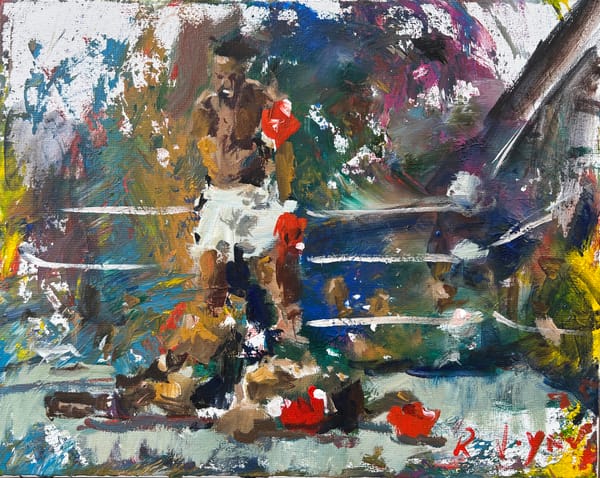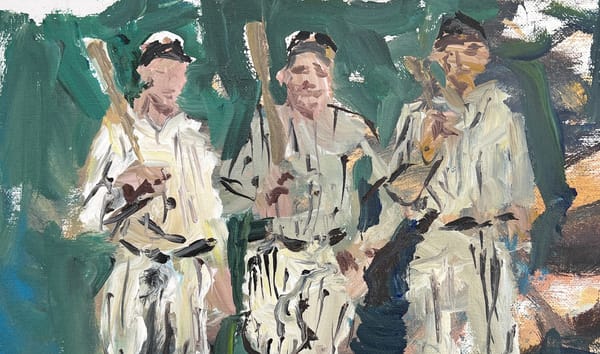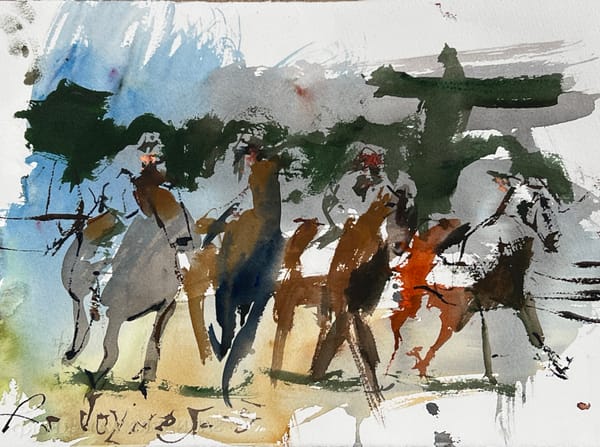Mastering Landscape Painting with Acrylics
Discover tips for mastering landscape painting with acrylics for beginners. Exploring simple and advanced techniques. Video included, let’s go!
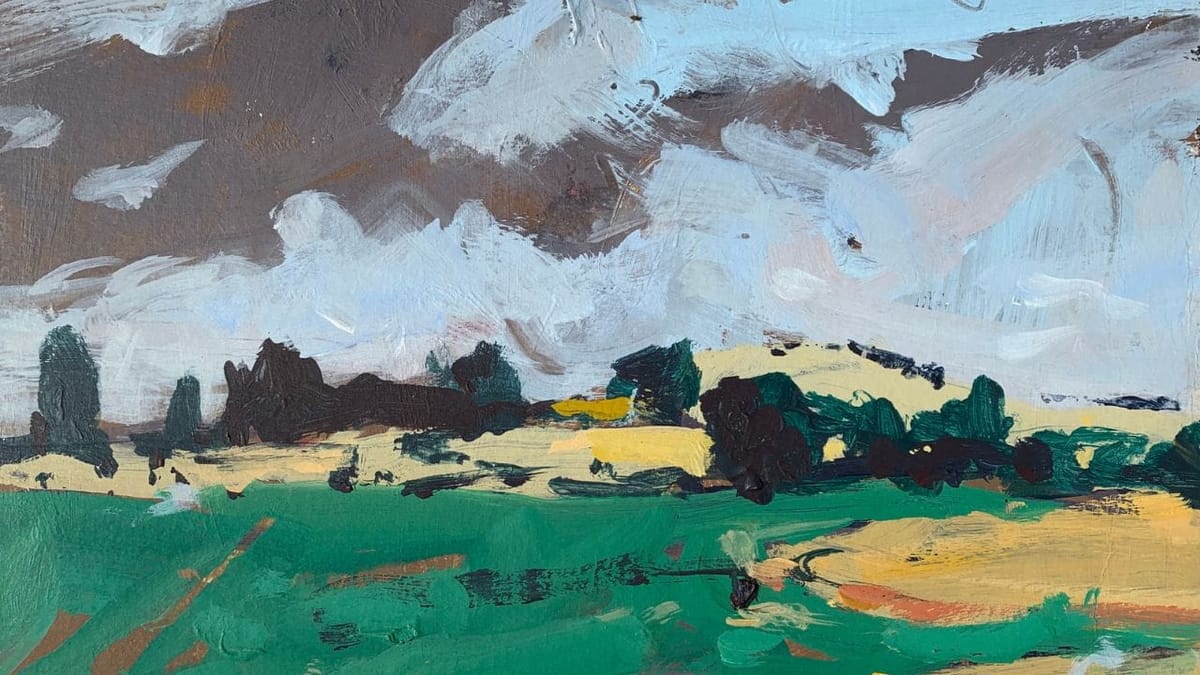
In this blog, we’ll delve into the world of acrylic landscape painting for beginners, exploring why it’s a great choice for beginners and experienced artists alike, the essential tools you’ll need, and a step-by-step acrylic landscape painting tutorial on how to paint landscapes with acrylics. I’ll also share some tips and techniques, common challenges and how to overcome them, inspirational examples, best courses to learn, and how to maintain and preserve your paintings.
I’ve always felt painting acrylic landscapes is akin to opening a window to the natural world, inviting in the vibrant colors, the play of light and shadow, and the texture of the earth and sky. This form of art, often referred to as acrylic landscape painting, not only captures the beauty of nature but also the emotions and feelings it evokes. Whether it’s the tranquility of a lush forest, the drama of a stormy sea, or the grandeur of a mountain range, landscape painting acrylics allow us to express our own perceptions and experiences of the world around us.
Acrylic paints are a versatile and accessible medium for landscape acrylic painting. They’re easy to use, dry quickly, and offer a wide range of colors and effects. Plus, being water-soluble, you can thin them with water to create washes and glazes, or use them straight from the tube for more opaque and textured effects in your landscape painting.
Ready to Learn Acrylics for Landscape Painting?
Acrylic paints are a popular choice for landscapes in acrylic for several reasons. First, they’re incredibly versatile. They can mimic the properties of both oil and watercolor paints, offering the best of both worlds. You can use them to create thin, transparent layers like watercolors, or thick, textured strokes like oils for your acrylics landscape.
Second, acrylic landscape painting techniques benefit from the fact that acrylics dry quickly, which allows you to work fast and build up layers without having to wait for each one to dry. This can be particularly useful when painting landscapes, as it allows you to capture changing light conditions or weather patterns quickly.
Lastly, acrylic landscape paintings for sale are known for their durability and resistance to fading, which means your creations will stand the test of time. They’re also water-soluble, which makes cleanup a breeze – no need for harsh solvents or mediums, and these acrylic landscape painting tips can help maintain the longevity of your work.
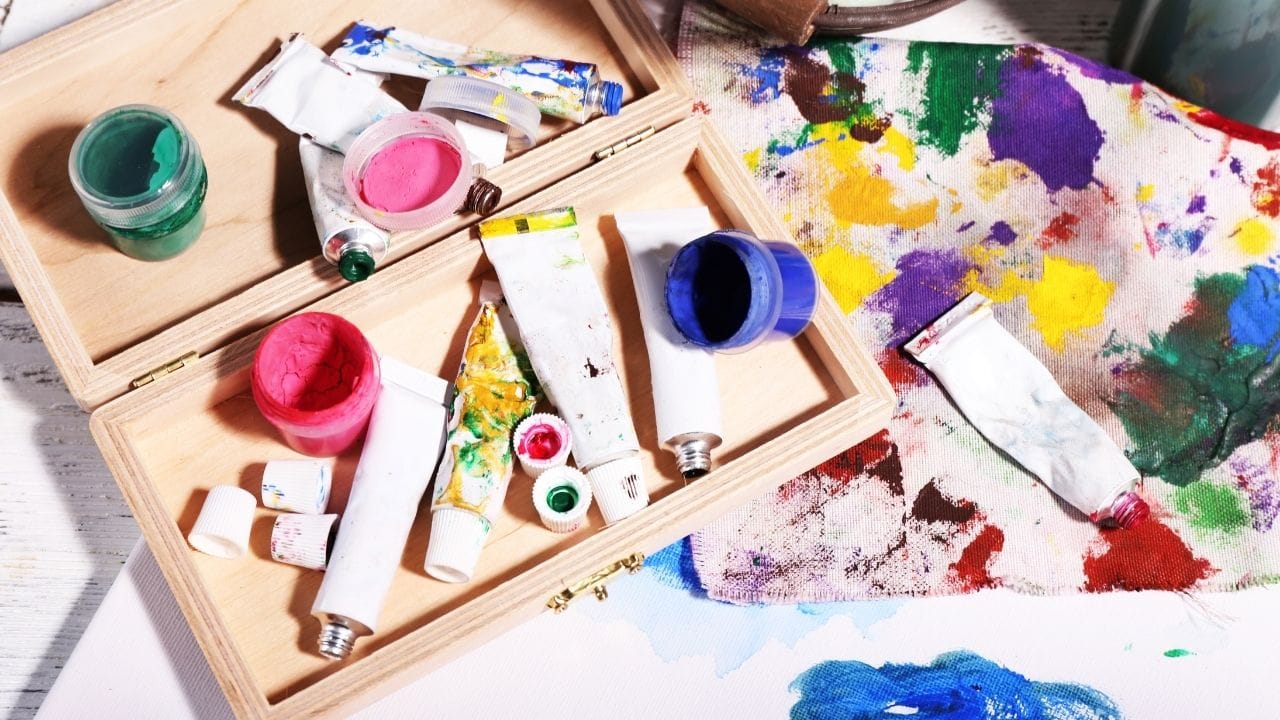
Essential Tools for Acrylic Landscape Painting
When embarking on your journey of landscape painting with acrylics, there are a few essential tools you’ll need. First and foremost, you’ll need;
- Acrylic paints for your acrylic landscape painting on canvas. These come in a variety of brands and price ranges, so choose ones that suit your budget and needs.
- Next, for your acrylic landscape painting ideas, you’ll need a selection of brushes. A variety of brush sizes and shapes will enable you to produce diverse effects and intricate details in your artwork.
- Flat brushes excel at covering expansive areas, while round brushes are ideal for details and creating smooth lines.
- Filbert brushes, with their rounded edge, are exceptionally versatile and suitable for executing both broad strokes and meticulous details.
Additional tools essential for acrylic landscape painting lessons include;
- palette for blending your paints
- container for water to rinse your brushes
- canvas or sturdy paper
To enhance your acrylic painting landscape techniques, you may also consider investing in some mediums, which can modify the texture and drying time of your paints, and an easel to support your canvas as you work.
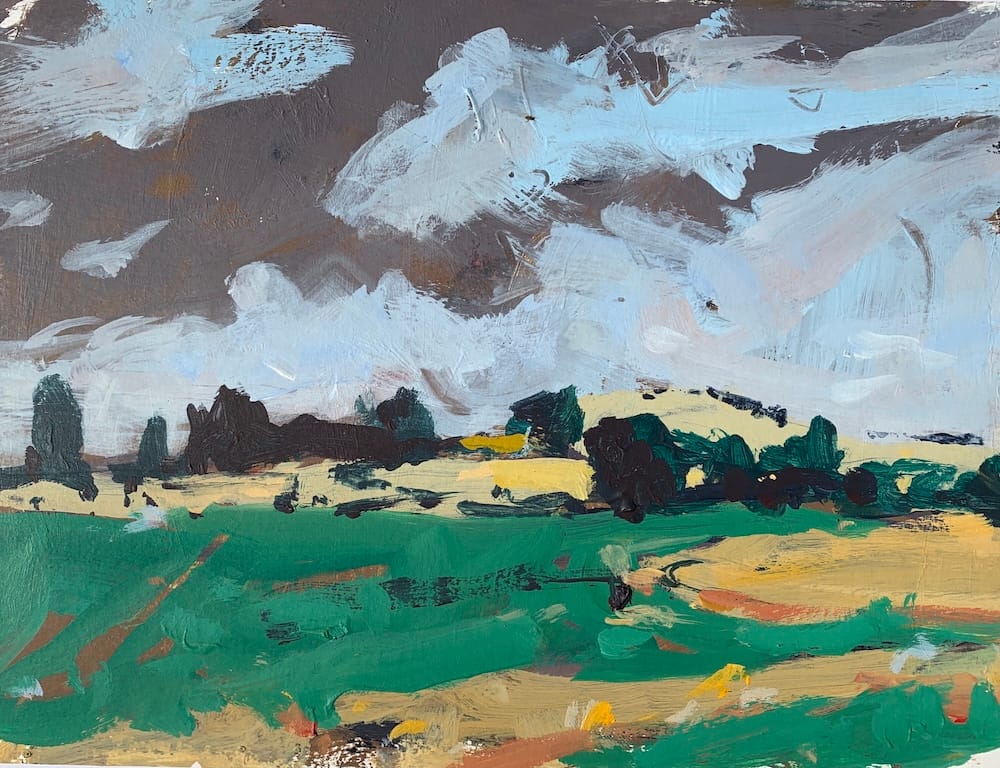
How to Paint a Landscape with Acrylics Step by Step
Embarking on a step by step acrylic landscape painting can seem overwhelming, especially for those new to beginner acrylic landscape painting. Yet, with consistent practice and patience, you can produce stunning, expressive landscapes that encapsulate the beauty of nature. Here’s a straightforward guide to assist you in beginning your journey.
- Choose your scene: Start by deciding what landscape you want to paint. You could use a photograph, paint from life, or use your imagination. Consider the composition of your painting – where will the main elements be, and how will they draw the viewer’s eye?
- Sketch your scene: Before you start painting, sketch out your scene on your canvas with a pencil. This will give you a roadmap to follow and help you get the proportions right.
- Block in the main colors: Using a large brush, start painting in the main colors of your landscape. Don’t worry about details at this stage – just focus on getting the general colors and shapes down.
- Add in the details: Once your main colors are down, you can start adding in the details. Use smaller brushes and take your time with this step. This is where your landscape will really start to come to life.
- Final touches: Finally, add in any final touches, such as highlights, shadows, or small details that will make your painting pop.
Remember, painting is a process, and it’s okay if your initial attempts don’t turn out precisely as you’d envisioned. Keep practicing, and you’ll see your skills flourish over time.
Tips and Techniques for Mastering Landscape Painting
When it comes to mastering landscape painting with acrylics, there are a few tips and an acrylic landscape painting demonstration can offer valuable insights.
- First, to excel in acrylic landscape art, practice honing your observation skills. Spend time immersed in nature, scrutinizing the hues, forms, and textures that surround you. Observe the shifting light throughout the day and its impact on the landscape. The more you observe, the more adept you’ll become at conveying the true spirit of a landscape in your artwork.
- Second, don’t hesitate to venture into uncharted territory. Delve into various painting techniques, such as dry brush (utilizing a brush with scant paint to generate a textured look) or glazing (applying a sheer layer of paint atop another hue). Explore different color palettes and discover what resonates with your style, as suggested in some acrylic landscape painting books.
- Lastly, be patient with yourself. Mastering the nuances of acrylic landscape painting takes time and practice, so don’t be discouraged if your paintings don’t turn out as you’d hoped at first. Keep practicing, and with the help of acrylic landscape painting videos, you’ll see your skills improve over time.
Common Challenges in Landscape Painting and How to Overcome Them
One of the biggest challenges in landscape painting is capturing the vastness and complexity of nature on a small canvas. It can be difficult to decide what to include and what to leave out, and how to represent three-dimensional space on a two-dimensional surface, all while developing your unique landscape painting styles.
- One way to overcome this challenge is through careful composition. Think about what you want the viewer to focus on, and arrange the elements of your painting to guide their eye. Use techniques like perspective and atmospheric perspective to create a sense of depth in your acrylic landscape paintings on canvas.
- Another common challenge is capturing the changing light and weather conditions in a landscape. This can be particularly tricky with acrylics, as they dry quickly and don’t allow for much blending. One solution is to work quickly, using a limited palette to keep your colors consistent, and learning how to paint landscape with acrylics can help you adapt to these conditions.
- Finally, don’t be afraid to use artistic license. Remember, your goal is not to create a perfect replica of a landscape, but to express your own interpretation of it. If something doesn’t look right or isn’t working, feel free to change it. It’s your painting, after all, and embracing acrylic landscape painting easy techniques can empower your creativity.
Inspirational Examples of Landscape Paintings with Acrylics
Looking for some inspiration for your own landscape paintings? Here are a few examples of incredible acrylic paintings of landscapes that might spark your imagination.
- Claude Monet’s “Water Lilies”: Although Monet is known for his oil paintings, this series shows how acrylics can be used to create soft, impressionistic landscapes.
- David Hockney’s “Mulholland Drive”: This vibrant, abstract landscape shows how acrylics can be used to create bold, expressive works.
- Emily Carr’s “Forest, British Columbia”: This painting captures the lush, dense forests of British Columbia with rich, saturated colors.
How to Maintain and Preserve Your Acrylic Landscape Paintings
Once you’ve created your masterpiece, you’ll want to ensure its longevity. Here are a few tips on how to maintain and preserve your acrylic landscape paintings for beginners:
- Keep your painting clean: Dust and dirt can accumulate on your painting over time. To clean it, use a soft brush or cloth to gently dust the surface. Avoid using cleaning products, as they can damage the paint.
- Protect your painting from sunlight: Direct sunlight can cause the colors in your painting to fade over time. To prevent this, display your painting in a location out of direct sunlight, or use a UV-protective varnish.
- Store your painting properly: If you need to store your painting, wrap it in a clean, soft cloth or acid-free paper, and place it in a cool, dry location. Avoid stacking paintings on top of each other, as this can cause damage.
Conclusion
Landscape painting with acrylics is a rewarding and landscape painting easy way to connect with nature and express your creativity. It can be challenging at times, but with practice and patience, you can create beautiful, expressive landscapes that capture the essence of the natural world.
Whether you’re a beginner just starting out with acrylic painting for beginners landscape, or an experienced artist looking to explore a new medium, I hope this blog has given you some valuable insights and inspiration. So grab your brushes and paints, head out into nature (or your imagination), and start painting landscapes for beginners! Happy creating!
